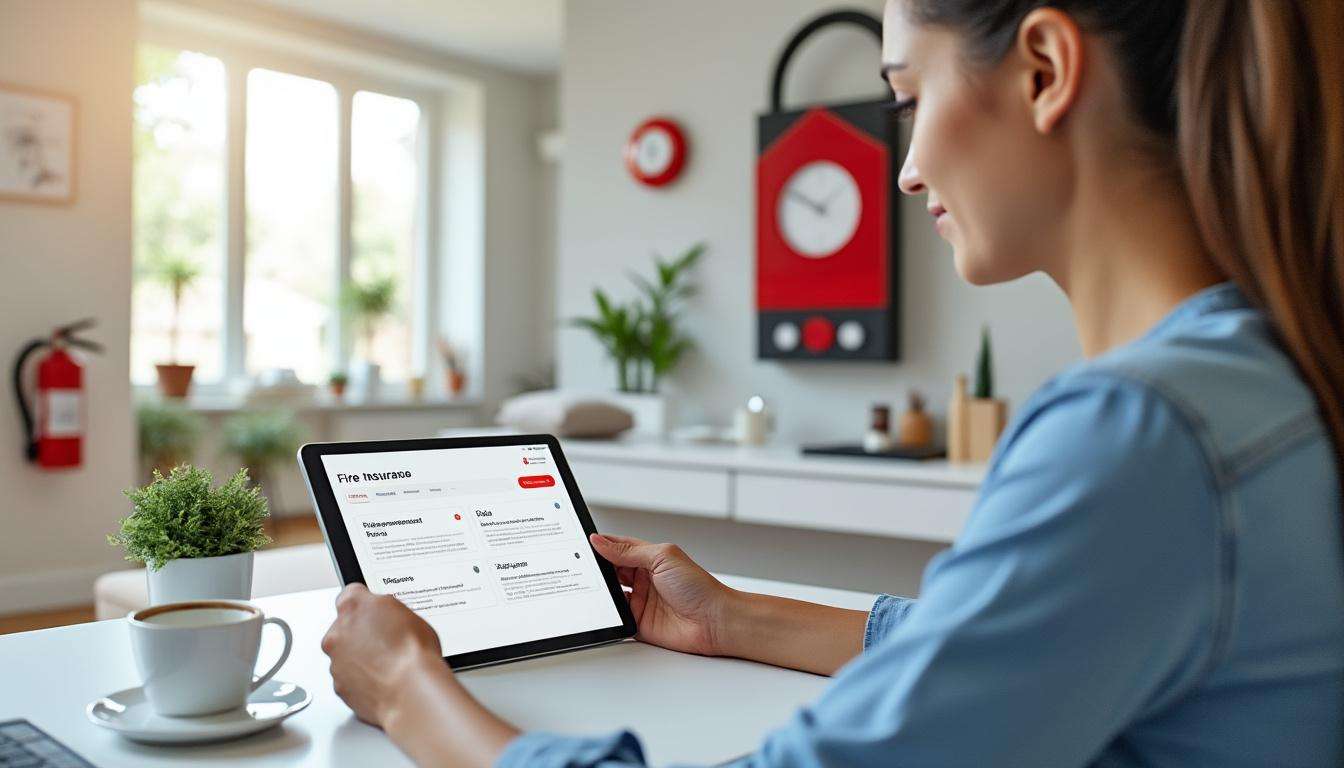Fire Insurance Tool That Makes Coverage Simple in 2025
Innovative Tool Empowers Homeowners to Secure and Comprehend Fire Insurance More Effectively — this guide explains how modern devices and analytics help homeowners reduce risk, lower premiums, and navigate claims with confidence. Follow Claire, a California homeowner, as she tests solutions and reshapes her policy choices for a safer home.
Fire insurance tool benefits: why homeowners act now
Homeowners face rising fire exposure in many regions, and a dedicated fire insurance tool can translate sensor data into clearer coverage decisions. Claire used an integrated system to detect wiring hotspots and immediately adjusted her policy after presenting data to her insurer.
- Early detection from devices like FireSafe IQ reduces claim severity and response time.
- Underwriting insights from platforms such as SafeHaven Analytics can speed approvals and unlock discounts.
- Policy clarity — paired tools help homeowners understand exclusions and limits before filing a claim.
These advantages make it easier to prove mitigation efforts during renewal or a claim, often resulting in tangible savings. Insight: document prevention steps now to strengthen your coverage position with insurers.
How IoT and analytics lower fire risk and insurance costs
IoT devices paired with AI analytics change insurance from reactive to proactive protection. Insurers using these data streams—like the Nearmap-style wildfire risk models—can offer better pricing or faster claims processing.
- Smart sensors detect abnormal heat or electrical faults before ignition.
- Predictive analytics prioritize properties at higher risk to allocate prevention resources.
- Discounts are increasingly offered to homes with verified risk-reduction tech.
Claire’s insurer applied a discount after she installed a SmartFire Cover sensor and shared logs. Insight: combining devices and documented evidence is now a leading way to reduce premiums.
Selecting the right solution: features to require in a fire insurance tool
Not all solutions are equal; prioritize systems that provide actionable alerts, clear reports, and insurer-friendly summaries. When Claire compared options, she focused on data export formats and third-party validation to ensure the system would be accepted by underwriters.
- Prefer devices that generate timestamped logs and standardized risk reports.
- Choose partners with proven partnerships, like those integrating BlazeSecure Solutions or HomeShield Innovations.
- Verify compatibility with insurer requirements or recognized programs to maximize discounts.
Practical tip: ask prospective providers for a sample report you can present to your agent. Insight: a vendor that supports insurer-ready documentation speeds up savings and claims.
An insurer study showed properties using prevention tech saw fewer severe claims and faster settlements. Claire filed a minor electrical claim and used device logs to demonstrate mitigation; the claim was resolved without a rate hike.
- Devices like FireGuard Pro and InfernoProtect Tech provide forensic evidence for fast claims.
- Platforms such as FlameGuard Insights help interpret sensor data into insurer-friendly narratives.
- InsureSafe Tools connectors allow secure sharing with carriers for streamlined handling.
By presenting evidence proactively, homeowners can often avoid premium escalations after small incidents. Insight: keep records and use analytics to protect both home and premiums.
Integrating a fire insurance tool with your policy and preparedness plan
Integration means more than installing a sensor; it involves aligning devices, documentation, and communication with your insurer and emergency plan. Claire updated her emergency contacts, created a device maintenance schedule, and shared her mitigation certificate with her agent.
- Ensure reports from tools map to policy sections described in the insurance coverage and claims guide.
- Use preparedness resources to complement technology, for example following advice in insurance insights on preparedness.
- Check how prevention tech affects premiums via tips in reduce home insurance premiums.
Combining tech and preparedness strengthens both safety and bargaining power with insurers. Insight: a documented plan plus tech creates the best leverage for favorable policy terms.
Claims preparedness and policy language to watch
Review exclusions, reporting timelines, and evidence requirements in your policy; a good tool helps you meet those conditions. Claire found a clause that required “timely reporting” and used her device’s automatic logs to comply immediately.
- Keep copies of maintenance records and device firmware updates for claims support.
- Ask your agent how third-party data (e.g., from SecureHome Tools) will be treated in underwriting.
- Consult resources like insurance coverage and claims guide for phrasing that matters.
Being proactive about documentation prevents surprises when filing a claim. Insight: treat device logs as part of your official claims dossier.
Cost, ROI and selecting vendors in 2025
Evaluate total cost of ownership and expected premium reductions; many homeowners recoup device costs within a few years. Recent market examples show insurers rewarding verified mitigation with lower rates or faster renewals.
- Compare upfront costs versus projected annual savings from providers like FlameGuard Insights or BlazeSecure Solutions.
- Look for vendors that report compatibility with insurer programs highlighted in the wildfire premium reduction guide.
- Use comparative articles such as car insurance guide 2025 as a model for evaluating policy changes across product lines.
Case note: Claire’s system paid for itself after two years through reduced premiums and avoided loss. Insight: measure ROI by combining rate reductions, claim avoidance, and peace of mind.
Next steps: a simple checklist to implement today
Start with a clear, insurer-ready plan and one reliable prevention device, then scale from there. Claire followed a four-step path that any homeowner can replicate to improve protection and policy outcomes.
- Install a validated sensor and register it with your insurer or vendor.
- Document installation, maintenance, and incident logs securely.
- Share summary reports with your agent and ask about discounts tied to FireSafe IQ or similar endorsements.
- Review policy language and update coverage based on verified risk reduction.
Action now yields both safety and potential savings when the unexpected occurs. Insight: one step today reduces future exposure and strengthens your claim position.
A tool provides documented evidence of risk reduction—early detection logs, maintenance records and analytics—that many insurers accept as mitigation steps. This can lead to lower renewal rates or one-time discounts when you present the data during underwriting.
Which device features should I prioritize?
Prioritize reliable, tamper-resistant sensors that produce timestamped logs, exportable reports, and third-party validation. Also look for vendors that offer clear insurer-ready summaries to simplify claims and renewals.
Will insurers accept third-party device data?
Many insurers now accept verified device data, especially when it comes from recognized platforms. Confirm acceptance with your agent and use tools from vendors known to integrate with underwriting systems.
Can these tools help during a claims dispute?
Yes—timestamped logs, analytics and mitigation reports from providers like InsureSafe Tools and SafeHaven Analytics strengthen your case by showing proactive measures and incident timelines.


